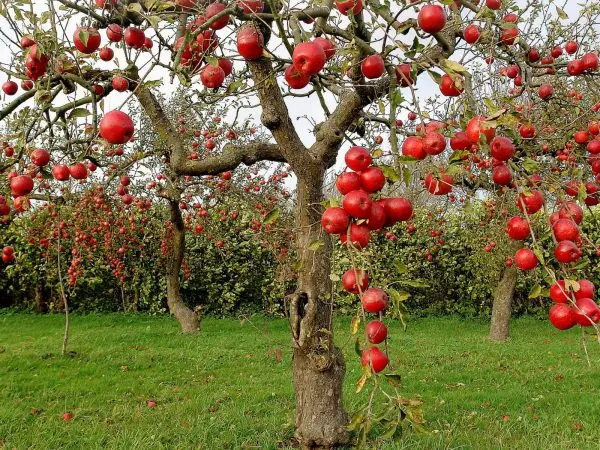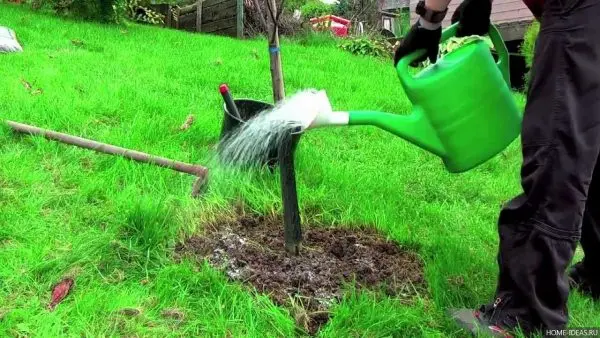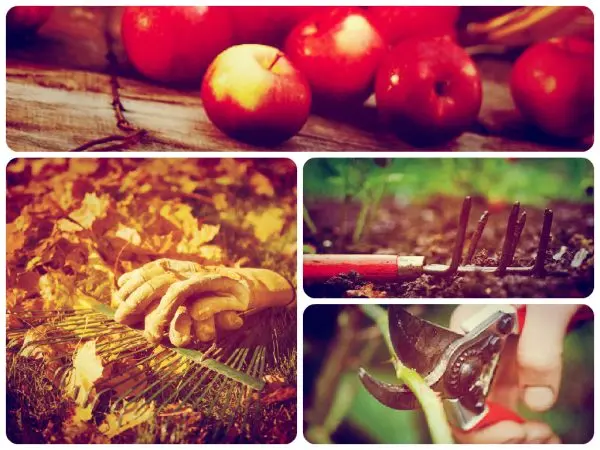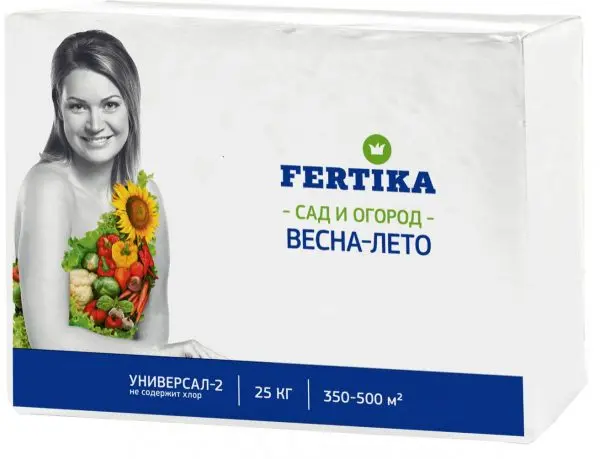Contents
The trees in the garden have been growing for decades and no crop rotation rules apply to them. For a long time of active growth and fruiting, they greatly deplete the soil, which is why they need constant feeding. Proper autumn feeding of fruit trees is the key to a good harvest next year.
What to feed
In summer, garden trees give us their fruits, which means they deplete the reserves of organic and mineral elements they need for later life. That is why the main fertilizers must be applied in the fall, when the growth process is completed, the trees are preparing for winter. They need nitrogen, potassium, phosphorus, calcium, sulfur, iron, magnesium in order to calmly endure the winter and start spring growth with renewed vigor. In addition, they also need a certain amount of manganese, molybdenum, cobalt, boron and other trace elements. That is why in the fall it is desirable to apply complex mineral fertilizers. Which ones to choose?

It must be remembered that nitrogen is not desirable to make especially before winter. Feed the trees in autumn while they are still growing. A large dose of nitrogen will enhance the growth of additional shoots, which means it will weaken the tree for winter. Scientists believe that for additional root growth, which happens in many fruit crops in August-September, the tree will redistribute the remaining nitrogen from the leaves and branches, and additional feeding with this element will disrupt the plant’s preparation for winter rest. Thus, the main elements that a tree needs in autumn are potassium and phosphorus.
Potassium helps trees survive winters, no matter how harsh they may be. Potassium sulphate (usually produced in powder) or potassium chloride can be applied to the soil in autumn. Both fertilizers contain approximately 50% base material. Chlorine will not harm an apple tree, a pear, which means that they can be fed with cheaper potassium chloride. But sensitive crops are more suitable for potassium sulfate. After its use, soils are not considered acidified, although a very small amount of sulfuric acid remains.

A very popular and good fertilizer that you can use in the fall is potassium magnesia. It contains only 25% potassium, but there is also 11-18% magnesium, which is also very good. It must be made with magnesium deficiencies. In plants that lack this element, interveinal chlorosis is observed – the leaves become spotty in color: only stripes of veins remain green, and between them the color turns pale to yellow. Then it is necessary to add potassium magnesia or magnesium sulfate to the trunk circle, diluting no more than 2 g in 1 liter of water. If an undissolved sediment remains, it can be poured under a tree – before spring it will have time to dissolve and will not harm the roots with its concentration.
The main phosphate fertilizer is superphosphate. It can be simple (approximately 20% phosphorus) and double (up to 49%). Powder or granules of a dark gray color must be embedded at the level of the roots, because phosphorus practically does not move through the soil. To feed adult trees, 5–7 holes are dug (according to the size of a shovel), having previously removed the turf, pour 1 handful of phosphorus and potash fertilizers each, mix with the ground, and water. Then the turf is returned to its place.

Ammophos is a more concentrated fertilizer, but since it contains nitrogen, it is better to apply it in the spring. Apricots, cherries, apple trees that do not tolerate winter can be fed with expensive, but very effective monopotassium phosphate. It does not contain any ballast substances, is completely absorbed by plants, and is produced in the form of a powder. Like all phosphorus-containing preparations, it must be embedded in the ground at the level of the roots.
Video “The better to feed the trees”
Video review of the most popular and effective fertilizing for fruit trees, as well as useful tips for fertilizing them.
Fruit trees
Whatever top dressing you make during the spring – summer, in the fall, garden trees need to be given organic and mineral fertilizers so that they can survive the winter and prepare for the next growth period. To this end, a month before the expected frost, grooves are made around each fruit tree, approximately 30 g of potassium salt, 50 g of superphosphate and 5 kg of humus are added for every 1 sq. m of root area. Phosphorus will help strengthen the root system and will contribute to the accumulation of proteins and sugars by cell sap. Potassium removes excess fluid from the cells, makes the juice thicker, which helps to survive frosts more easily. Organic fertilizing has the potential to increase fertility.
During autumn fertilization, one should think about improving the structure of the soil, which could change under the influence of many factors. To make heavy clay soils lighter, more breathable, sawdust is added (maybe not even rotted). If you need to acidify the soil, wood ash can bring a lot of benefits. It contains at least 17 trace elements necessary for fruit trees. It is brought no more than 250 g – per 1 sq. m area.

Experienced gardeners say that under fruit trees up to 8 years old, 30 kg of humus should be added, and older trees will need all 50 kg. It is deeply buried by digging up the ground. Apple and pear trees require 300 g of superphosphate and 200 potassium sulfate. They can be repaired together with humus – the main thing is not to forget that phosphorus scattered over the surface of the earth will not reach the roots itself. Plums and cherries are generously watered with water (at least 4 buckets for each tree), having previously dissolved 10 tablespoons of superphosphate and 3 tablespoons of potassium sulfate in 2 liters of water.
There are complex mineral fertilizers that have already been tested and have shown themselves well, for example, “Autumn”, “Fruit Garden”, “Universal”, Kemira “Autumn”. They are easy to use, guided by the instructions, this will save you from unnecessary worries and doubts.
Liquid top dressing
Since in autumn you still need to give fruit trees a large supply of water, many gardeners use liquid top dressing. To do this, mineral fertilizers are dissolved in the required amount of water, then the resulting solution is further diluted and poured into the grooves around the trunk. Usually use ammophos, superphosphate, any potash fertilizers that dissolve easily. From organic fertilizers, it is best to apply slurry, mullein, chicken manure.

What else can you feed
What other top dressing can be used in the fall? Each owner of a summer cottage has his own preferences. Many believe in the rule: if you carry surplus crops from garden to garden, and from garden to garden, then this will only bring benefits. So, apples and pears that fell from trees that did not please the owner may well find their place on the compost heap along with grass and waste after pruning garden trees. And overripe zucchini or cucumbers, which the hostess rejects, can be brought under fruit trees by digging them into the ground.
Some summer residents believe that leftover food, coffee and tea can also be buried under trees, sprinkled with sawdust, spilled with diluted chicken droppings or mullein. They arrange a compost heap in this way under each tree separately. This is probably also good, but it makes sense to cover it all with a layer of soil and make sure that fallen leaves do not get there. It is better to remove leaves from under trees – harmful microorganisms and rodents remain in them for the winter.

Video “Tree Care”
Informative video about tree care, as well as fertilizers and pest control products.









